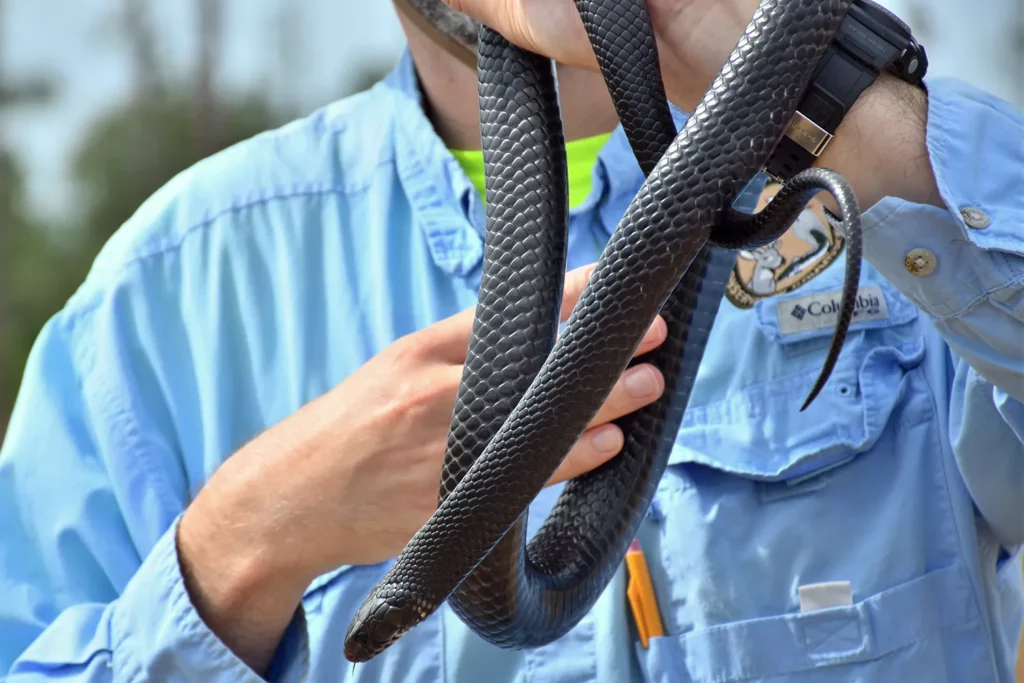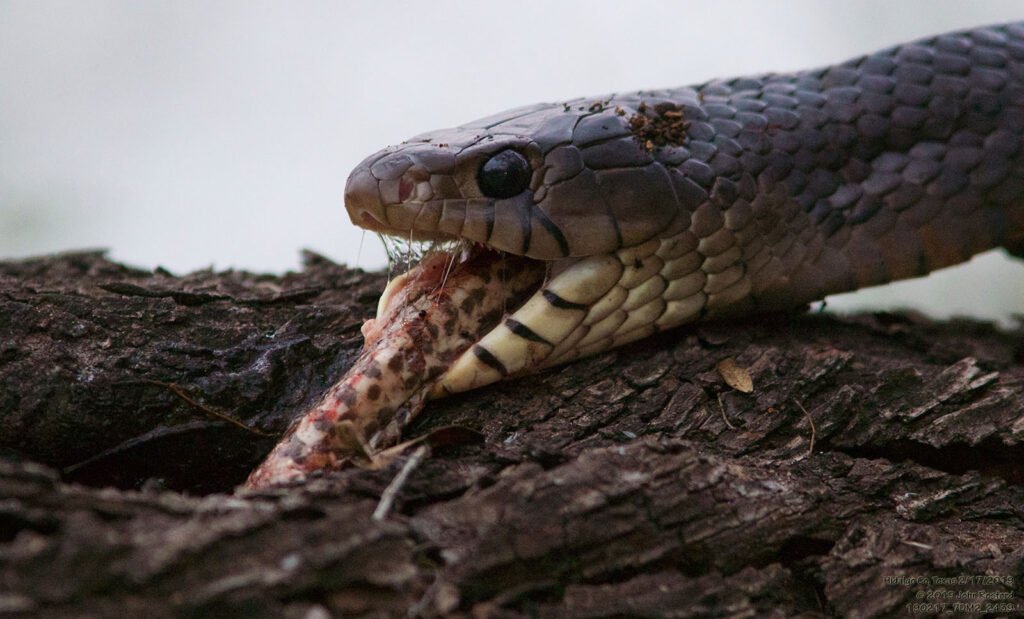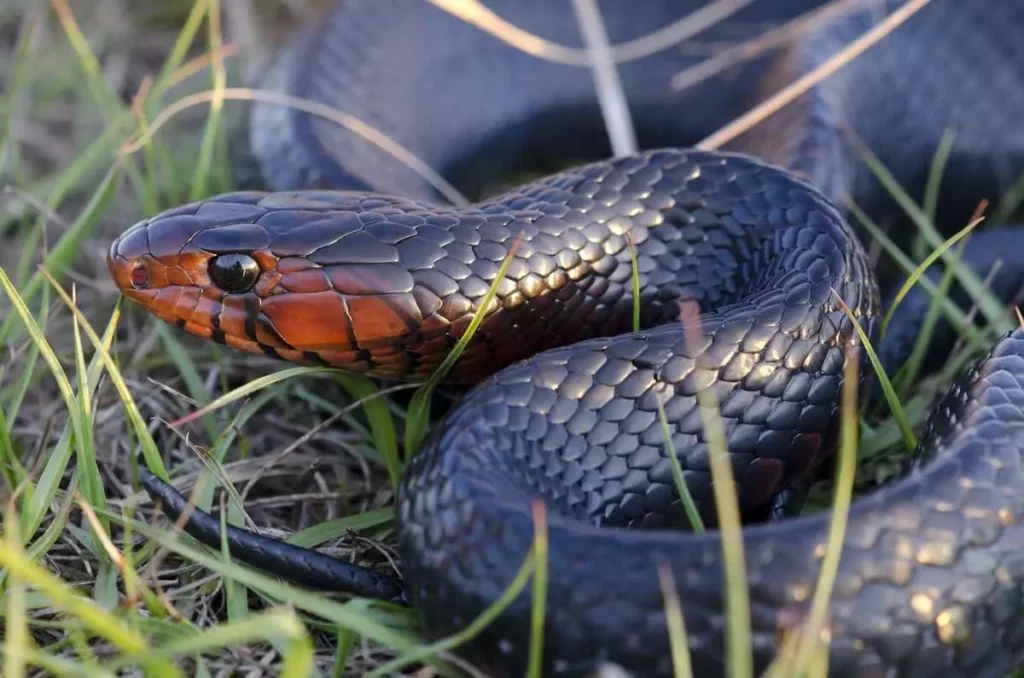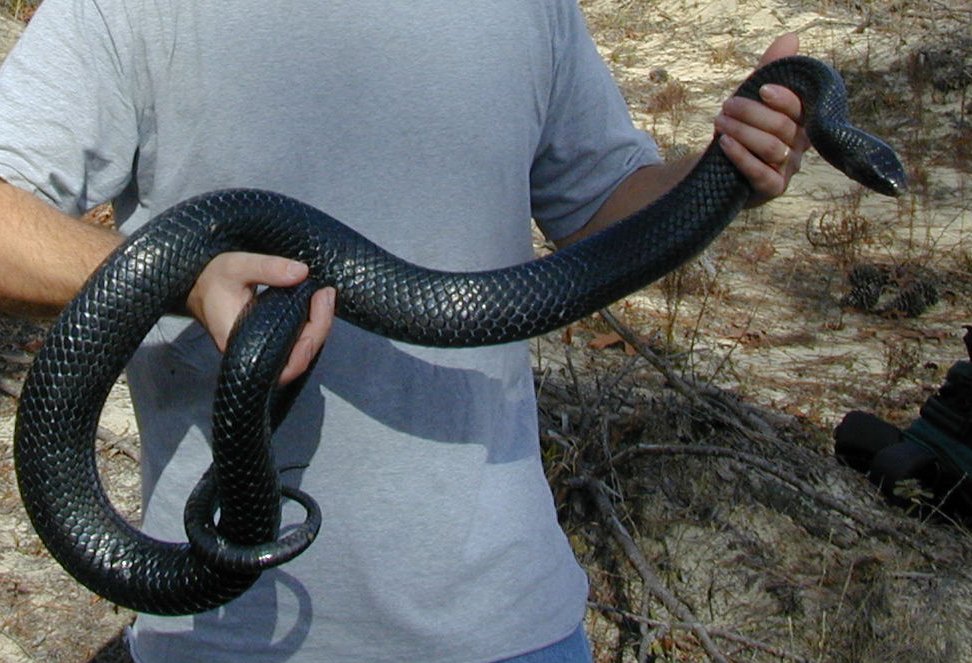The annual reintroduction of eastern indigo snakes signals success in a decades-long conservation effort
Florida’s forests just welcomed a new batch of rare residents. On April 30, 41 eastern indigo snakes were released into the wild at Apalachicola Bluffs and Ravines Preserve (ABRP).
These snakes—21 males and 20 females—are part of a long-term effort to restore a once-common species. This is the eighth year that The Nature Conservancy and its partners have conducted the release.
“The snakes are native, non-venomous, and critical to this ecosystem,” said Catherine Ricketts, preserve manager at ABRP. “Their return is a sign that the landscape is healing.”
A Long-Term Mission Sees Signs of Success

This latest release brings the total number of snakes returned to the site to 167. The eastern indigo snake is the longest species native to North America, reaching over eight feet.
In 2023, conservationists spotted two hatchlings born in the wild, the first natural offspring of previously released snakes.
“Finding juvenile indigos means our decades of restoration work are paying off,” Ricketts said.
From Hatchery to Habitat

Each snake hatches at the Orianne Center for Indigo Conservation (OCIC). After a year, they move to the Welaka National Fish Hatchery, where they continue growing.
By age two, the snakes are ready for life in the wild.
“It fills me with pride to see them take their place in nature,” said Dr. James E. Bogan Jr., OCIC’s director. “They help hold the ecosystem together.”
Monitoring Progress in the Pines
Staff use foot surveys and trail cameras to track the snakes. These methods confirm that many of them are thriving.
“The future is very bright for indigo snakes here,” said Brad O’Hanlon, reptile conservation coordinator with Florida Fish and Wildlife. “This is one of Florida’s best conservation stories.”
The Apalachicola Bluffs and Ravines Preserve is the only site in Florida where this reintroduction is happening.
Why This Snake Matters

The eastern indigo snake once roamed across Florida, Georgia, Alabama, and Mississippi. Today, it’s federally threatened due to habitat loss.
This species plays a big role in balancing the food chain. It eats small mammals, amphibians, and even venomous snakes.
“The indigo is a top predator and an essential part of this ecosystem,” TNC said in a statement.







